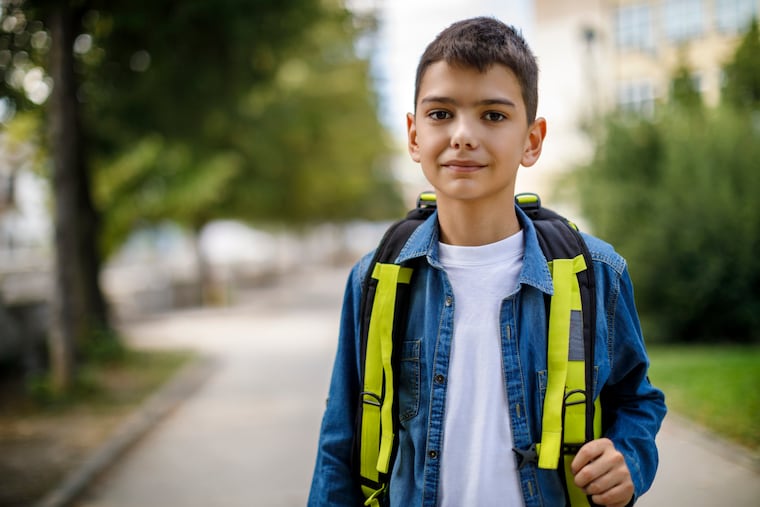An effective — and cheaper — way to ease the middle-school transition
Letting kids hear from other kids that, sure, middle school is tough but it gets better and that there is help out there correlated with better grades, higher attention and fewer behavioral problems.

A new study from education researchers has come up with a deceptively simple yet surprisingly effective way of helping students cope with the infamously stressful transition from elementary to middle school:
Let them hear from other kids that, sure, middle school is tough. But it gets better, help is out there, and they can do this.
What could that possibly accomplish? Apparently a lot.
The intervention devised by education researchers with the University of Wisconsin at Madison and administered to more than 1,300 sixth graders in all 11 of the Madison Metropolitan School District’s middle schools correlated with better grades, higher attention, and fewer behavioral problems compared with students who didn’t get the intervention.
And it was cheap. The average cost was $1.35 per student.
“We were attempting what psychologists would call normalizing the adversity that students experience in the beginning of middle school,” explained lead study author Geoffrey D. Borman, a professor of educational leadership at the University of Wisconsin at Madison.
For those who don’t remember, middle school for many youngsters can be a scary place. Students go from having one teacher to several. Often they are going to a new school farther from home than their elementary school. The tests can seem harder, with higher stakes. They may have to make new friends. And on top of all that, they are going through the profound developmental, psychological, and physical changes that go with approaching adolescence.
The Wisconsin researchers set out to create an intervention, in the form of reading and writing exercises, that would seek to address and allay some of the stress of the middle-school experience.
In a randomized trial, about half of the students were given two reading and writing exercises at the start of their first year of middle school on a relatively neutral topic.
The other half got the intervention exercises — one in the first couple off weeks of school, the second about a month later. Written as if they were from students who had already completed their first year of middle school with the help of student focus groups, the intervention materials convey that the angst students may be feeling is normal and temporary, that there are teachers and others willing to help in their new school, and that in time they will fit in and find friends. The students were also given writing assignments to help reinforce the reassuring messages in the reading materials they were given.
The intervention exercises were personalized to each school; the messages were attributed to theoretical students from the study participant’s school.
At the end of the school year, the researchers surveyed the students on their attitudes and their experience of their first year. They also collected data from schools about the student. The intervention students reported a greater sense of belonging, less test anxiety, and more trust in their teachers.
There were also more tangible results. The students in the treatment group had 34% fewer behavioral referrals, 12% fewer absences, and 18% fewer D and F grades than the students who got the neutral assignments.
“One reason I believe these exercises are so effective is that the messaging is not coming from an adult,” said Borman. “And it’s not advice — telling students you should do this, you should do that. Instead it’s providing an example of what other kids went through, how they navigated this transition and what turned out to be successful for them. Kids tend to take advice and ideas from their peers more readily than from an adult.”
The findings from the study were published last week in Proceedings of the National Academy of Science, the journal of the National Academy of Science. Borman said they had similar results with students in an Arizona school district. He said his team was looking for other districts willing to test out their approach.
The results of the study could send a message to education administrators and leaders, Borman said.
“Middle school has a rather notorious reputation as a difficult place for these emerging adolescents,” Borman said. “I think we have to be more sensitive and more caring for these transitioning middle-school students and understand what they’re going through.”
Educators and school officials interested in participating in further study of this intervention can contact Borman at geoffrey.borman@wisc.edu.